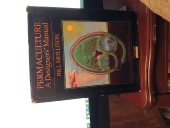Like Ralph, sheer laziness.
Or, rather, "laziness" is what it gets called when you're one of those people who thinks working very hard for little or no meaningful gain makes no sense, and refuse to do it--even when you're clearly not lazy because you're doing all kinds of other things that are interesting and rewarding.
I grew up in suburban SoCal in the '70s and early '80s, and deeply resented chores like lawn-mowing, leaf-raking, and hedge-trimming because it felt like being stuck on a treadmil, going nowhere. I remember, at age eight, telling my parents that if we just let the unused front lawn die off during the dry times of the year, and spray-painted it green, nobody would notice, and we (my brother and I) would be spared that hour and a half of front-yard maintenance every Saturday and could thus do something more fun (that they'd save money on the water bill was still outside of my conceptual framework). It didn't go over well (and I don't think saving money on water would have made much of a difference).
Southern California is a fantasyland, a folly--it's a desert next to an ocean, and the inhabitants have been fighting for over a century now to keep up the pretense that it's a lush and verdant garden. But the desert keeps asserting itself, interrupting humans' silly play-pretend game. The real seasons there are Beautiful, Hot and Dry, Everything's Burning, and then Floods and Mudslides. And as a kid, watching the adults around me put so much time, money, ingenuity, and effort into this ongoing battle against nature, that they waged constantly in the name of everything "looking nice"--it became part of a whole complex of doubts I had about their sanity, and whether I should trust any of their ideas about how one ought to live their life, or aspire to.
I found myself rooting for the desert. And not just the literal, SoCal coastal desert that wants to burn up, and will (just you wait!), but other environments and other situations where nature is just doing its nature thing, while humans run themselves ragged trying to pretend they can conquer it, and make it do their bidding.
A book that hit me full-force when I first read it was John McPhee's The Control of Nature, particularly the essay, "Los Angeles Against the Mountains," because it spoke so eloquently of the folly and absurdity and willful denial of nature I'd witnessed since childhood. That somebody had seen the same thing I had, and put it into words like that, made me feel so much less alone.
I didn't learn about permaculture until 1993, while living in San Francisco. I was in no position then to actually practice it. But I remember flipping through some guy's copy of Mollison's designer's manual, as he explained the basics to me, and having the feeling of relief, of thinking, "My god, somebody actually understands the problem, and knows what to do about it."







